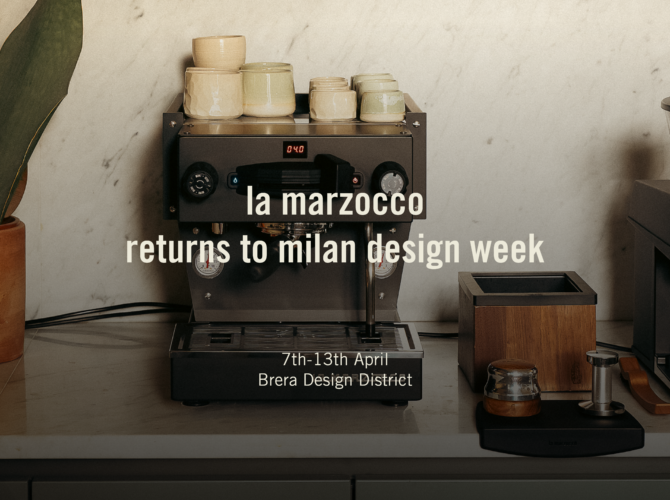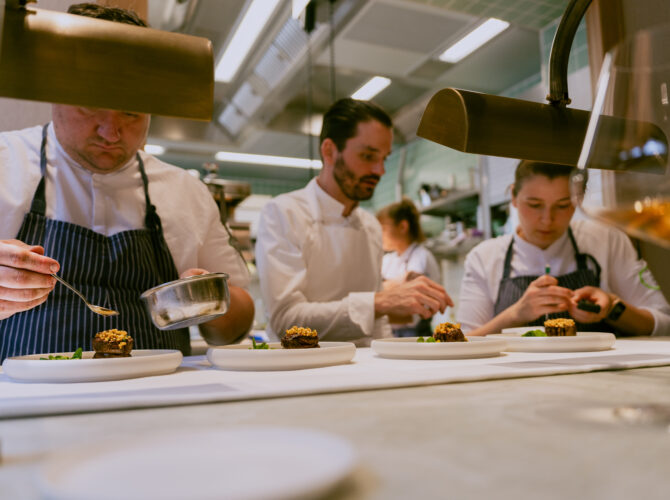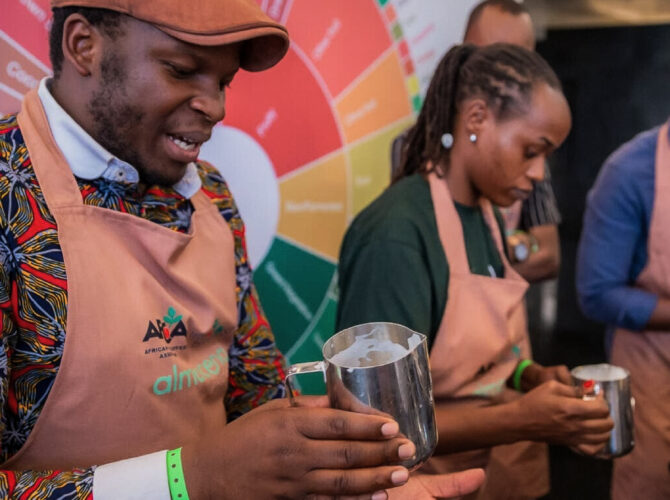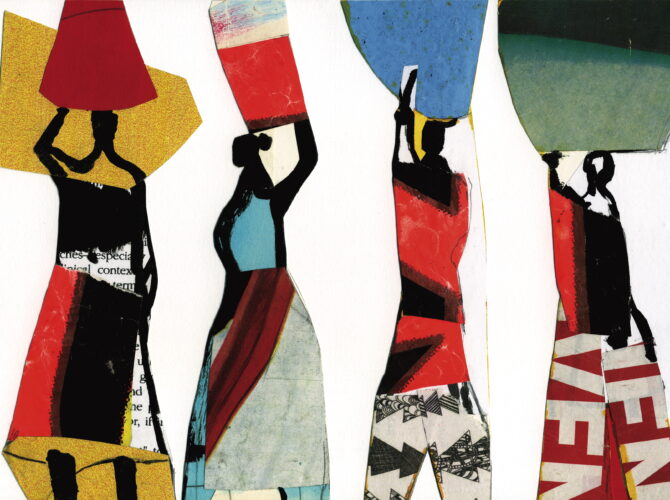Kent Bakke, now Honorary President of La Marzocco, has been instrumental in the company’s remarkable growth by inspiring continuous innovations that have influenced the entire coffee industry.
I met him during his last stay in Italy and asked him why La Marzocco, with its great experience in producing professional and home espresso machines, also produces coffee grinders today. (Camilla Catarzi, Company Biographer at La Marzocco interviews Kent.)
Kent Bakke elaborates: It might feel like something has changed, but I think it’s part of the company’s history; I find it a natural and logical evolution. When my friends (later turned partners) and I met La Marzocco in the late 1970s, the factory was already producing espresso coffee machines and grinders. They were still selling the original Vulcano grinder. Today, producing espresso coffee grinders is part of the company’s strategy and interest.
La Marzocco must be able to offer its solutions to baristas and home baristas, products that reflect its style and its take on the espresso coffee grinder.

I don’t remember correctly, but I think that, at the time, they were working on the grinder with a company that later closed or decided to abandon the project. Maybe La Marzocco didn’t have a big enough business at the time because it was pretty small in the late 1970s. Regardless, I’ve always thought that we already had some experience with grinders and, in particular, an interest in providing our customers with a La Marzocco solution to go with their espresso coffee machine.
You mentioned the La Marzocco of the late 1970s. But what was that like? And how did you discover such a small company?
When I finished college, I worked at a hamburger stand for a while, and I talked to my friends, saying that we could open something like that. So we opened a diner in Pioneer Square in the old part of Seattle and soon learned how challenging it was to have a restaurant and a coffee shop.
In the diner, we also found an espresso machine. I didn’t know anything about coffee or how to make espresso; it was the first time I had ever seen one. But I started tinkering with it and learned how to use it.
I went around a few coffee shops as if I were a technician, and that’s how I learned more. Then, at some point, we thought that instead of servicing the machines, we should import them and sell new ones. So, we decided to go to Italy.
It was me, Asa, and Barbara, my business partners at the time. Discovering La Marzocco was a crucial, decisive experience. I didn’t realize it instantly at the time. Yes, we knew we were going on an adventure, so we would be in unfamiliar places and meet people we didn’t even know existed. We probably looked like a tribe of long-haired hippies in their eyes.
It was a tiny workshop, and we met Piero, his father, his uncle, and the other people there—I think there were maybe a dozen workers.
If you looked around, you could see how things were made and how they worked. It was totally different from anything I had seen up to that point, and it was like being a kid in a candy store. It took us a year to sell the first machine and get out of the restaurant business, which, as much as I liked it, was not really my calling. My father was not a big believer in my choice, although he always supported me. He was an entrepreneur, but what I was doing was too new, and he could not quite understand it.
I persevered, thinking about Italian espresso machines and thinking that I was doing the coolest thing I could do. If I were to say, “I work with espresso machines,” someone would inevitably ask me if it wasn’t time for me to get a real job.
So you were working with both espresso machines and grinders.
Well yes. The next project for a grinder was in the mid to late 1990s, when we were working with Starbucks in the United States, and they were looking for solutions to reduce the impact that repetitive movements have on the barista’s health.
A barista must be fast and methodic in their work, repeating the same movements all day long. In Seattle, we developed the Swift espresso grinder.
For me, that project was proof that we were contributing something meaningful to the coffee grinder industry, and that was important: to be able to come up with innovations that were unique to La Marzocco, to listen to the customer’s needs and give them quality solutions that didn’t compromise the product and, most importantly, the coffee quality, but helped baristas and companies continue to improve and maintain the quality of what was in the cup.
And how did it go with this grinder?
Initially, we had selected a technology that proposed a unique solution for coffee grinding, and it applied what they would now call a “hybrid grinder”: it first had a conical burr to reduce the size of the beans into smaller particles and then it finished the grinding thanks to a flat burr. It was all incorporated together, our original choice for the Swift.
We even built some prototypes. However, we had a quality control problem with the grinding mechanism. So eventually, when we went into production, we had a solution that allowed for a double bean hopper that allowed for two coffee blends: the standard blend and a decaffeinated or a second blend or whatever one wanted to serve at their bar.
At that time, we were working with David Schomer from Espresso Vivace, and we got him one of the hybrid coffee grinders made in Italy. He really liked these grinders. He used them for many years until around 2004 when he told me that his grinders were starting to wear out, but the hybrid model was no longer in production. He told me that he had some specific ideas about what he thought would solve some of the static problems and what would be best for the coffee, so we decided to start a project around that, which turned into a very steep learning curve that went very deep into grinding and that eventually culminated in the Swan. There were many challenges in between!
So, like others at La Marzocco, it was a project that started from feedback from people who asked for better equipment.
Yes. John Blackwell and Jacob Ellul Blake were part of it from the beginning. Jacob presented an early prototype of this coffee grinder at the 2007 SCAA in Long Beach and came up with some of the original concepts from which we started. Jens Brine from Sweden also spent quite a bit of time on that project, so there were a lot of prototypes; we went through several problems that we had to overcome and through different solutions for them that didn’t always work. It took a lot of time, a lot of experimentation, a lot of learning, and a lot of research to get to the point where we finally had Swan.
So technically, it wasn’t my idea, but it was a very important project for La Marzocco.
It was critical to have our own grinding solution with technologies that we could control and improve. It is part of our evolution and philosophy to do everything we can as manufacturers to provide equipment that will help maintain or improve the quality of what our customers serve in their cups. I appreciate that I am given credit for the achievement, but I mostly put in my determination (or stubbornness) to keep it going.
Great credit must be given to the team in Italy for their perseverance because it was a long, long process. It’s not thanks to me, as I only gave some ideas, but it really took a lot of people who spent a lot of time on the project and didn’t give up.

Are we really talking about a 17-year process?
Yes, maybe even longer! We started in Seattle, but since we didn’t have a factory in Seattle anymore, we involved skilled members of the R&D department who were in the factory in Italy. When we were working with Jens, who lived in Sweden, closer to Italy, he spent a lot of time working in the factory. Over time, a team of engineers was born. In 2000, we had Roberto Bianchi as our only engineer, and then we started hiring new people, and new projects were added as well. Plus, since product improvement continued to be the most essential part of our work, we had to organize and structure ourselves.
It was a cooperative effort, a long-term dream, and a long-term “exercise of stubbornness”; it took a lot of people and a big team to make it happen.
I am very proud of how Swan has been made: it has achieved excellent results. It is amazing how the quality of the coffee that comes out of it is reflected in the cup. This result confirms that we are part of the coffee grinding industry, that we are serious about it and that we listen to our customers. And that’s the important message.
Grinders are just as important as espresso machines, if not more so, but the information and knowledge on them are very limited. It looks easy from the outside, until you actually start working with it. It’s a very challenging and complex process, and I can say that we’re not there yet; we’re halfway through the journey, wherever it takes us, because there’s always more to learn.







